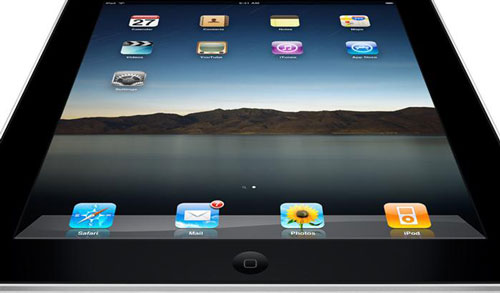
How far does an iPad get you on the road in Africa, perhaps the toughest continent for travellers? Your correspondent spent a month finding out, while journeying 8 000km overland in eastern and southern Africa, two of the continent’s better connected regions. (Parts of North Africa are fine, too, as are limited parts of West Africa, but the bit north of the middle from Congo to the Sahara is virtually a no man’s land for tablet computers.)
Between Nairobi in Kenya and Cape Town one can find plenty of 3G coverage. Pretty much every town now has a 3G signal. You can even pick one up on cross-country bus trips in Tanzania, and intermittently while driving in Zimbabwe. But this happens at astonishing cost. Westerners switching on their 3G receiver will probably get a message from their service provider saying they will be charged about US$40 for just the first few megabytes that day, and every day. And lots more after that. Locals pay a tiny fraction of said amount, so it’s worth trying to get a local Sim card, though that can be tricky.
Mostly you should stick to Wi-Fi networks in hotels or private homes. And there are lots of them. Hotels charging above $100 a night will have Wi-Fi, as will plenty charging less, though some connections are slow. Skype mostly works but not always. The bigger annoyance can be cumbersome login procedures that have to be repeated every time you turn on the iPad. And there are lots of unnecessarily complex passwords.
Another unexpected problem can be charging the battery. Power cuts are common across Africa and often the most reliable charging opportunity is found in a car, using an adapter to plug the iPad into the cigarette-lighter socket. The gizmos sold at Apple stores are easier to use than some of the other stuff out there.
When it comes to actually using the iPad to make travel easier, there are three main areas: maps, travel guides and booking tools. Producing offline maps for Africa should be easy, yet your correspondent was not able to find anything as good as the online ones at Google Maps — and even they are not great. (Is it possible to get a Google map offline?) With an iPad in one’s bag there really is no need to carry soiled hard-copy maps, and there is huge potential for the company that develops top-quality, downloadable maps. Please, someone sort this out.
The same goes for travel guides. Lonely Planet has started offering some of its books in Kindle format (usable on the iPad with the Kindle app). Even more useful for travellers in Africa will be the soon-to-be released e-versions of the Bradt guides. Your correspondent was able to use PDFs provided by the company, thus lightening his load by many pounds. On a long trip, travellers no longer have to lug around half a dozen guide books (plus novels, magazines etc). But the publishers have yet to exploit the full potential of the e-versions. Some are searchable and one can jump directly from the table of contents to a chapter or sub-section. But the maps are terrible. Most are black-and-white copies of what’s in the hard-copy books. Some maps are halved or quartered because they didn’t fit on a page. Who would do that on a computer?
It would be nice to integrate Google Earth, or simply include full-colour maps with interactive features. E-guide books are very welcome but feel like the equivalent of 1960s television. Whichever company spends serious money on reinventing the travel guide for tablets — rather than just copying stuff over from paper — might discover a vast consumer market.
As for booking apps, here, too, there is still lots of room for improvement. Expedia has yet to offer more than a copy of its iPhone app. It works on the iPad but is puny. Kayak has an iPad app but it is less useful and versatile than the Web version — lots of parameters have been stripped out. Tripadvisor works well.
So, although the iPad is a huge help for travellers who want to cut down on luggage and increase their mobility, these are still early days. App providers have yet to take full advantage of the tablet’s potential, though I have doubtless overlooked many useful apps for hardy travellers. Feel free to suggest more in the comments. — (c) 2012 The Economist![]()
- Image: Red Orbit (used with permission)
- Subscribe to our free daily newsletter
- Follow us on Twitter or on Google+ or on Facebook
- Visit our sister website, SportsCentral (still in beta)




